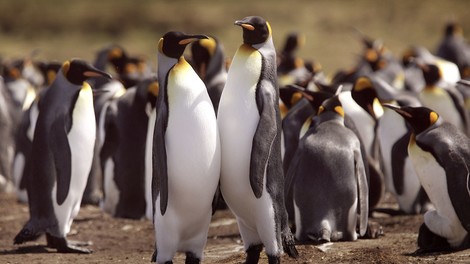Your podcast discovery platform
Curious minds select the most fascinating podcasts from around the world. Discover hand-piqd audio recommendations on your favorite topics.

piqer for: Climate and Environment Boom and bust Global finds
Didem Tali is an award-winning journalist covering international development, gender, displacement and environment issues for English-language media around the world.
King Penguins Face Major Threats Due To Climate Change
A new scientific model developed at the University of Strasbourg revealed that up to 70 percent of the world's king penguin population could disappear by the end of this century.
One of the main threats penguins are facing is that their source of food is getting farther away, which means they would have to swim more and more to reach it.
According to the researchers, king penguins breed only on islands that are ice-free near Antarctica, and there are "just a handful" of those. Penguins swim hundreds of miles to bring small sources of food to feed their chicks.
The NPR article reports that the source is a nutrient-rich band of water called the Antarctic Polar Front, where cold deep water meets an area of warmer water. King penguins get some 80 percent of their nutrition from this band. The researchers' model projects that the Antarctic Polar Front is moving closer to the South Pole — "so some of the islands north of the polar front will be farther away from the source of food."
There are currently an estimated 1.6 million king penguins in the world. Ongoing climate change might devastate over a million of them.
